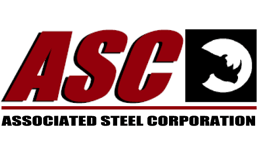Let me know if this reads a better, changed the order and made it (in my opinion ) a little easier of a flow without altering the message
Are there hardened (400bhn) wear plate angles and channels? November 2021 Blog
NO SUCH THING AS WEAR RESISTANT STRUCTURALS? (Other than low-hardness A588)
It is possible to make your own!
We stock a true 400bhn wear plate (sheet), 1/8” x 60” x 120”. It is clean, flat, and easy (relative to wear plates) to fabricate. We can Hi-def-plasma-cut pieces to order; simple rectangles and strips, or configurations per sketch. The cuts look almost like laser-quality with very little heat effected zone along the edge.
If you are involved with heavy plate maintenance and fabrication; more specifically, if you occasionally handle hardened wear plate, you will have a need for this unique product.
It forms well, is readily weldable (not too rich of a chemistry to cause problems), and it provides weight reduction where installation and handling might be a problem; not to mention you can make wear resistant containers, hoppers, tanks, that are lighter and therefore increase payload.
Where can it be used?
Strip it and tack weld it into the high wear areas of structural (A36) shapes. Tack it into the throat of a “U”, or, on the inside of one or both legs of an angle. You now have wear resistant structural steel.
Is a cart riding on top of a rail wearing down the top surface? Tack on a strip of this to add a 400bhn wear surface.
The material is perfect for emergency temporary patching of blow-outs on job sites until heavier fabricated pieces can be delivered. An installer can get the pieces into hard-to-reach places where a repairman could handle the plate by hand. This is an alternative to 3/8” and ½” thick A36 liners. That’s a big reduction in weight! You may even find you benefit from the competitiveness of your bids.
Cutting: oxy, plasma, band saw (use blades for hardened alloys), abrasive wheel, laser, and water-jet.
Welding: Standard Low Hydrogen Method (7018, 8018)
Form: using standard precautions for working with wear plate. Form against the grain. Leave a large radius at the bend (when wear-lining angles and channels utilize a cut-and-weld operation)
I know this reeks of a sales pitch, but, we have customers who keep this on hand around the plant for; “As Needed by Anyone Needing It” purposes. It is a life-saver for keeping things moving while you are otherwise attempting to resolve the issue.
CAUTIONARY NOTE; Working with hardened steel, anyone’s hardened steel, involves risks. Be sure to use appropriate safety gear (hot-mill gloves, hard hat, safety glasses, etc.), Utilize persons experienced in handling hardened steels, including certified welders, etc. Try to form against the grain, incorporate the largest bend radius the application will handle. And, COMMUNICATE, COMMUNICATE, COMMUNICATE.
If there is something you are not sure of; ask your vendor!
-Howard Thomas, October 27th, 2021
